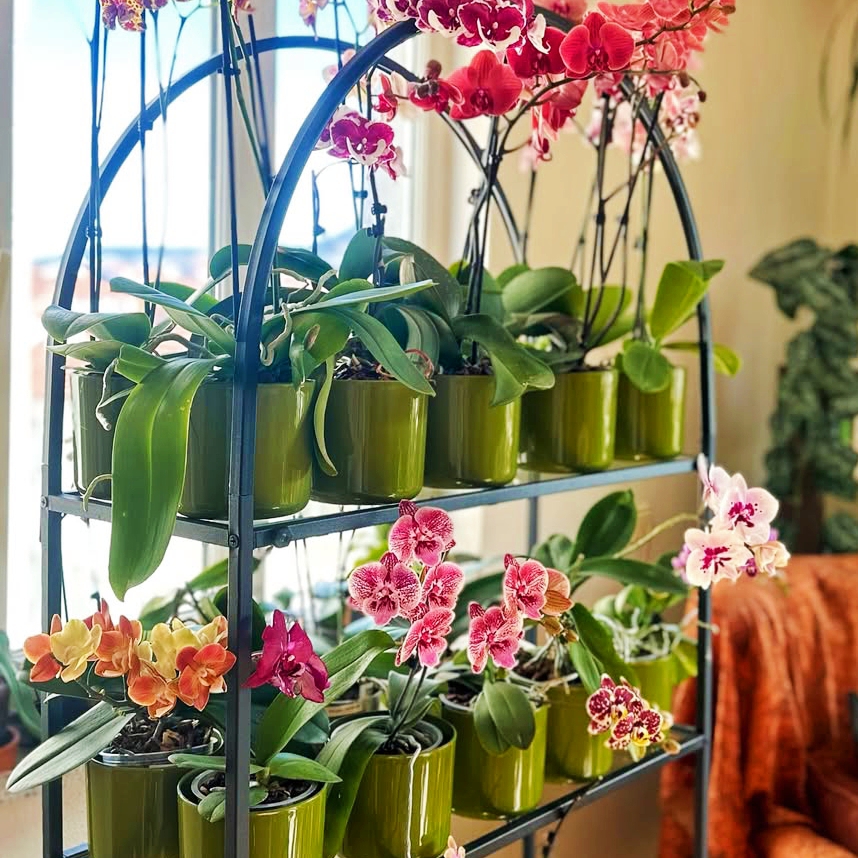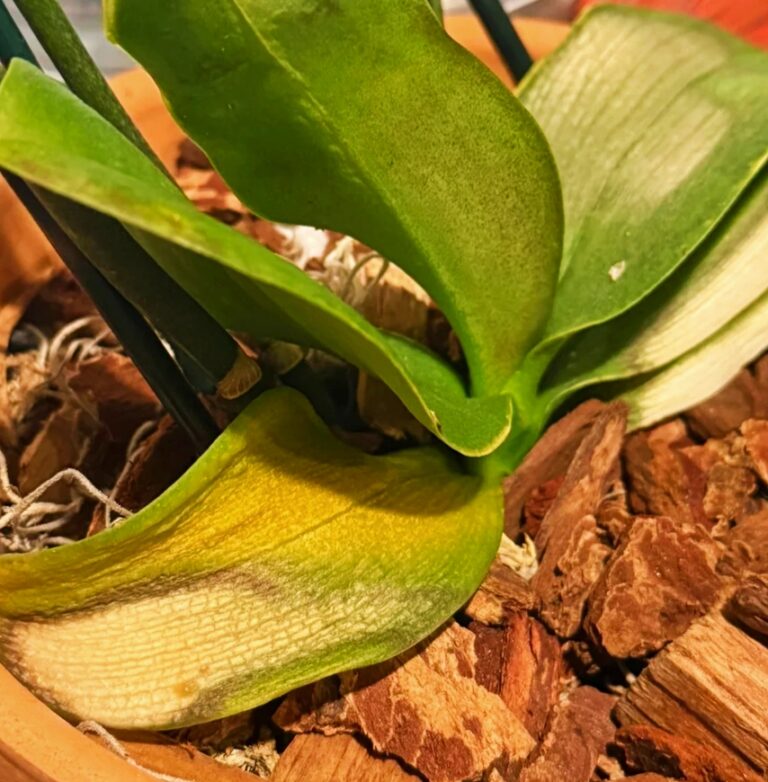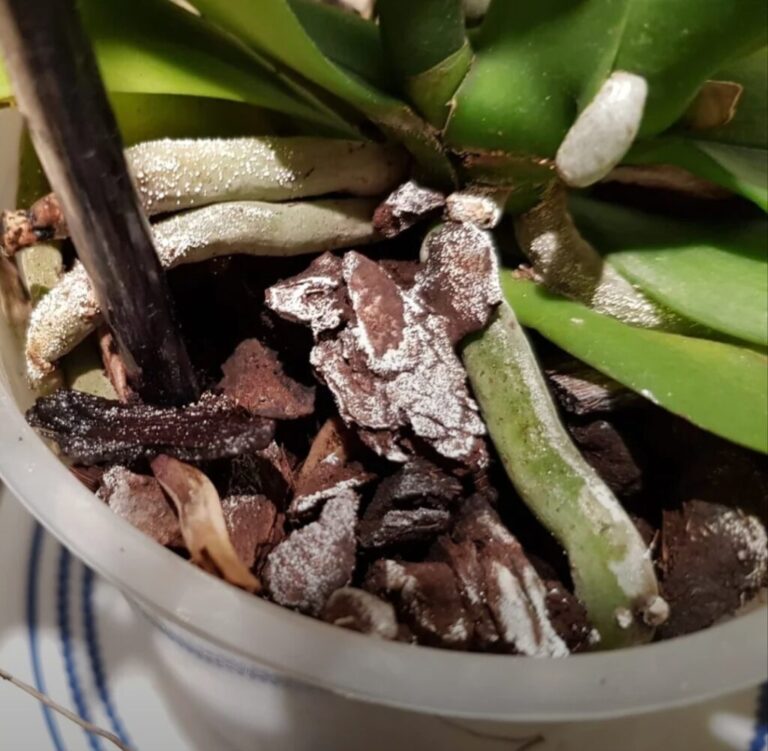Small Space Orchids are a stunning addition to any home, bringing a touch of elegance and natural beauty to even the most limited of spaces. However, taking care of orchids in smaller spaces requires a bit more attention to detail. In this guide, we’ll explore the 10 best hacks for caring for orchids in small areas, ensuring that your plants thrive despite spatial challenges. Whether you live in a cozy apartment or have a compact space, these tips will help you keep your orchids healthy, vibrant, and blooming.

- 1 1. Choose the Right Orchid Variety
- 2 2. Maximize Vertical Space
- 3 3. Provide the Right Lighting
- 4 4. Control Humidity Effectively
- 5 5. Proper Air Circulation
- 6 6. Use Compact, Self-Watering Pots
- 7 7. Limit Fertilizer Use
- 8 8. Regular Cleaning and Maintenance
- 9 9. Repot Orchids as Needed
- 10 10. Watch for Pests and Diseases
- 11 FAQS
1. Choose the Right Orchid Variety
When space is limited, choosing the right orchid variety is essential. Some orchids require more space, while others are more adaptable to smaller environments. For instance, miniature orchids like Phalaenopsis, Dendrobium, and Oncidium are perfect for small spaces because they have smaller leaves and compact growth habits. Their flowers are still stunning, and they can thrive in the confines of a tiny room or corner.
Tip: Look for orchids labeled as “miniature” or “compact” to ensure they fit comfortably in your space.
2. Maximize Vertical Space
In small areas, horizontal space is often limited, but you can make use of the vertical space by placing orchids on shelves or hanging them. Mounting orchids on a wall-mounted shelf or in hanging baskets can help free up counter or table space while still providing ample light and airflow for the plants. Orchids like Phalaenopsis and Cattleya can thrive in hanging pots if given the right amount of care.
Tip: Use adjustable wall shelves or hanging planters that can be moved as needed to optimize your available space.
3. Provide the Right Lighting
Orchids require proper lighting to thrive, but many small spaces lack ample natural light. In these situations, you can use grow lights designed specifically for orchids. Position the lights near the plants to simulate natural sunlight, ensuring that they get the necessary light intensity. Orchids generally need bright, indirect light, so placing them near a window or under a grow light for 12-14 hours a day is ideal.
Tip: If you’re using grow lights, opt for LED lights as they provide the correct light spectrum for orchids without overheating the plant.
4. Control Humidity Effectively
Orchids thrive in humid environments, but in smaller spaces, humidity levels can fluctuate. To maintain consistent humidity, consider using a humidifier or placing a tray of pebbles with water beneath the orchid pots. The water will evaporate, increasing the humidity around your orchids without making the area too damp. Alternatively, you can group your orchids together, as the combined moisture from their leaves will help maintain a higher humidity level.
Tip: Avoid misting your orchids directly, as this can lead to fungal issues. Instead, use a humidifier or place plants in proximity to each other to boost humidity.
5. Proper Air Circulation
In small spaces, stagnant air can become a problem, especially for orchids that require good airflow to prevent rot and mildew. To enhance air circulation, consider placing an oscillating fan on a low setting in the room. Alternatively, ensure that your orchids are placed in areas where air can naturally circulate, such as near windows or doorways. This will also help prevent excessive humidity buildup.
Tip: When using a fan, avoid placing it directly on the orchids. Position it so that it gently circulates the air in the room without blowing directly on the plants.
6. Use Compact, Self-Watering Pots
In small spaces, managing watering can become a challenge. Overwatering can lead to root rot, while underwatering can dry out the plant. Using self-watering pots can help regulate water levels, ensuring that your orchids receive consistent moisture. These pots come with a built-in reservoir that allows the plant to absorb water as needed, making care simpler and more efficient in a compact area.
Tip: Ensure the self-watering pots have proper drainage to prevent waterlogging, which could damage the roots.
7. Limit Fertilizer Use
While orchids do need fertilizer to thrive, small spaces don’t always provide the ideal conditions for frequent fertilizing. Over-fertilizing can lead to salt buildup in the soil, which may harm your plant. A good rule of thumb is to fertilize your orchids once a month using a balanced, water-soluble fertilizer. During the growing season, you can increase the frequency to every two weeks.
Tip: Use a diluted solution to avoid overfeeding, as orchids in small spaces may be more sensitive to excess nutrients.
8. Regular Cleaning and Maintenance
Maintaining cleanliness is essential, especially in small spaces where dust, debris, and mold can quickly accumulate. Dust the leaves and stems of your orchids regularly with a soft cloth to remove any buildup. Cleaning your orchids not only helps them absorb light better but also prevents pests from settling on their surfaces. Additionally, clean the pots and trays regularly to avoid fungal growth and the spread of diseases.
Tip: Wipe down your orchids’ leaves with a damp cloth once a week to ensure they stay healthy and free of dust.
9. Repot Orchids as Needed
In small spaces, orchids are often planted in smaller pots, which can lead to root congestion and limited growth. Repotting orchids every two years or when the pot becomes too small is essential for their health. This provides the plant with more room to grow and ensures that the roots are not suffocating. Use a well-draining potting mix designed for orchids and ensure that the new pot is only slightly larger than the previous one to avoid excessive moisture retention.
Tip: Repot your orchids in the spring or after they have finished blooming to minimize stress on the plant.
10. Watch for Pests and Diseases
In confined spaces, pests and diseases can spread more easily, making it important to regularly inspect your orchids for signs of trouble. Common pests like aphids, mealybugs, and spider mites thrive in warm, humid conditions, so make sure to treat any infestations promptly with organic insecticidal soap or neem oil. Additionally, inspect the roots and leaves for any signs of rot or fungal infection.
Tip: Isolate any affected orchids to prevent pests and diseases from spreading to your other plants.
Time Table for Orchid Care in Small Spaces
To make sure your orchids receive consistent care, a time table can help you stay on track. Here’s a basic weekly and monthly schedule:
| Task | Frequency | Time Commitment |
|---|---|---|
| Water orchids | Once a week | 10 minutes |
| Check humidity levels | Daily | 5 minutes |
| Clean leaves and pots | Weekly | 10 minutes |
| Check for pests | Weekly | 5 minutes |
| Fertilize orchids | Monthly | 15 minutes |
| Repot orchids (when needed) | Every 2 years | 30 minutes |
Tip : Don’t forget to be patient—orchids may need a little extra time to adjust to their new environment, but with consistent care, you’ll enjoy their stunning blooms for years to come.
Caring for orchids in a small space doesn’t have to be a challenge. By following these 10 hacks and implementing a consistent care routine, you can ensure your orchids thrive and bring beauty to even the tiniest corners of your home. With the right variety, careful attention to light, humidity, and airflow, as well as a regular maintenance schedule, your orchids can flourish no matter the size of your spac
By using these small space orchid care tips, you can create a thriving and beautiful orchid garden, no matter the size of your living area.
FAQS
What is small space orchid care?
Small space orchid care refers to the best practices for growing orchids in limited areas such as apartments, balconies, or small indoor spaces. It includes selecting compact orchid varieties, using vertical gardening techniques, and optimizing light and humidity conditions.
Which orchid varieties are best for small space orchid care?
Phalaenopsis, Dendrobium, and Miniature Cattleya orchids are ideal for small space orchid care. These orchids stay compact, making them perfect for apartments, windowsills, or small shelves.
How do I provide proper lighting for small space orchid care?
For small space orchid care, place your orchids near an east or south-facing window with sheer curtains to filter direct sunlight. If natural light is insufficient, use LED grow lights to support healthy growth
Can I grow orchids in a terrarium for small space orchid care?
Yes, orchids like Masdevallia and Restrepia thrive in terrariums, making them excellent choices for small space orchid care.To avoid too much moisture accumulation, make sure there is adequate ventilation.
What are the best containers for small space orchid care?
For small space orchid care, use hanging pots, wall-mounted planters, or compact containers with good drainage. Transparent pots help monitor root health.
How can I maximize humidity for small space orchid care?
Grouping orchids together, using a humidity tray, or placing a small humidifier nearby can help maintain the right humidity levels for small space orchid care.
Is repotting necessary for small space orchid care?
Yes, repotting is crucial in small space orchid care. Use small pots and refresh the growing medium every 1-2 years to prevent root rot and maintain healthy growth.






